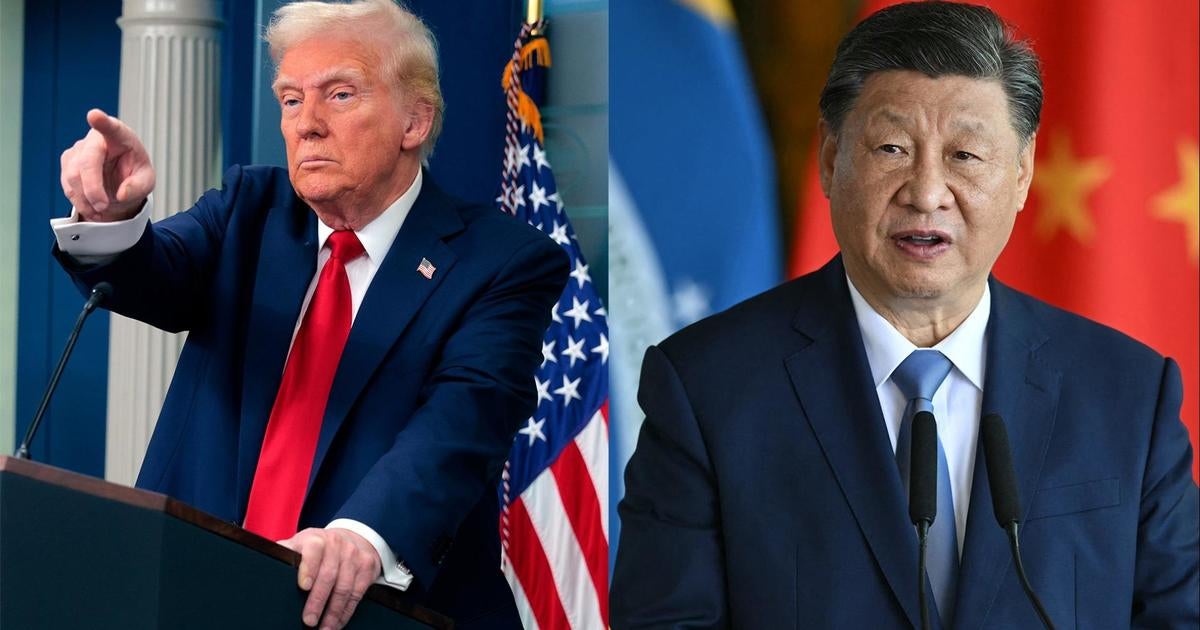Unpacking China’s Strategic Retaliatory Tariffs
As tensions rise between the U.S. and China, the implications of China’s planned retaliatory tariffs are becoming clearer. Understanding these tariffs is crucial for businesses and consumers alike as they navigate the evolving trade landscape. With the global economy intricately linked, the decisions made by one of the world’s largest economies can have ripple effects across the globe. This article aims to unpack the complexities of China’s strategic retaliatory tariffs, their motivations, and the potential impacts on various stakeholders.
What Are China’s Strategic Retaliatory Tariffs?
China’s strategic retaliatory tariffs are essentially taxes imposed on imported goods from the United States in response to similar tariffs enacted by the U.S. government. These tariffs are not merely economic tools; they are part of a broader strategy that reflects China’s desire to protect its economic interests and assert its position on the global stage. The key elements of these tariffs include:
- Targeted Goods: The tariffs typically target specific sectors or products, such as agriculture, technology, and consumer goods. This targeting is often strategic, aiming to pressure specific industries in the U.S. economy.
- Escalation of Trade War: These tariffs are a response to previous U.S. tariffs, creating a tit-for-tat scenario that escalates tensions and complicates trade relations.
- Political Messaging: Beyond economic implications, these tariffs serve as a political statement, demonstrating China’s stance against what it perceives as unfair trade practices.
The Motivations Behind China’s Tariffs
Understanding the motivations behind China’s strategic retaliatory tariffs provides insight into their broader economic and political strategies. Several factors contribute to China’s decision-making process:
- Economic Protectionism: By imposing tariffs, China aims to protect its domestic industries from foreign competition, fostering local growth and stability.
- Leverage in Negotiations: Tariffs create leverage in trade negotiations, allowing China to negotiate more favorable terms with the U.S. or other trading partners.
- Domestic Sentiment: The Chinese government often responds to domestic pressures, including public sentiment and the interests of local businesses. Retaliatory tariffs can be seen as a way to unify the public and bolster national pride.
Impact on U.S. Businesses and Consumers
The ramifications of China’s retaliatory tariffs extend beyond international relations; they directly impact U.S. businesses and consumers. Here’s how:
- Increased Costs: American companies that rely on Chinese imports may face higher costs, which can lead to increased prices for consumers. This is especially evident in sectors like electronics and clothing.
- Supply Chain Disruptions: Many businesses have complex supply chains involving both American and Chinese components. Tariffs can disrupt these supply chains, forcing companies to seek alternatives or absorb costs.
- Market Access Challenges: U.S. companies may find it more difficult to access the Chinese market, limiting growth opportunities and reducing their competitiveness globally.
Effects on the Global Economy
China’s retaliatory tariffs not only impact the U.S. but also have significant implications for the global economy. Here are a few key considerations:
- Global Supply Chains: The interconnectedness of global supply chains means that tariff changes in one country can affect production and pricing in another. Companies worldwide must adapt to these changes, which can lead to increased costs and reduced efficiency.
- Commodities and Raw Materials: Tariffs can influence commodity prices, particularly for agricultural products. For instance, China’s tariffs on U.S. soybeans have led to price fluctuations that affect farmers and producers globally.
- Investment Climate: Ongoing trade tensions can create uncertainty, discouraging foreign investment. Investors often seek stability, and prolonged tariff disputes can lead to a cautious approach in investment decisions.
Strategic Responses from Businesses
In light of China’s strategic retaliatory tariffs, U.S. businesses are adapting in various ways to mitigate the impact. Here are some common strategies:
- Diversification of Supply Chains: Companies are seeking to diversify their supply chains to reduce reliance on Chinese imports. This may include sourcing materials from other countries or exploring domestic manufacturing options.
- Price Adjustments: Some businesses may choose to absorb the costs of tariffs, while others might pass them on to consumers. However, careful market analysis is essential to understand consumer behavior and price elasticity.
- Engagement with Policymakers: Industry groups and businesses are increasingly engaging with policymakers to advocate for more favorable trade conditions and to influence tariff-related decisions.
Consumer Awareness and Adaptation
Consumers also play a crucial role in navigating the effects of retaliatory tariffs. Here are some ways in which consumers can adapt:
- Informed Purchasing Decisions: Understanding which products are affected by tariffs can help consumers make informed choices, potentially opting for alternatives that are not subject to increased costs.
- Support Local Businesses: By supporting local producers and businesses, consumers can help mitigate the negative effects of tariffs on domestic markets.
- Advocacy for Fair Trade Practices: Consumers can advocate for policies that promote fair trade practices, encouraging transparency and equitable treatment in international trade.
The Path Forward: Navigating Uncertainty
As the trade landscape continues to evolve, both businesses and consumers must remain agile and informed. While the immediate effects of China’s strategic retaliatory tariffs may be challenging, there are opportunities for innovation and growth. Here are some potential paths forward:
- Investment in Technology: Businesses that invest in technology and automation may find ways to reduce costs and improve efficiency, helping them to adapt to changing market conditions.
- Collaboration and Partnerships: Building partnerships with other businesses and stakeholders can create a stronger network for navigating challenges and leveraging opportunities.
- Focus on Sustainability: Companies that prioritize sustainable practices may not only appeal to environmentally conscious consumers but also reduce risks associated with volatile supply chains.
Conclusion
China’s strategic retaliatory tariffs represent a significant factor in the ongoing trade tensions between the U.S. and China. As businesses and consumers grapple with the implications of these tariffs, understanding their motivations and impacts is crucial. By remaining informed and adaptable, stakeholders can navigate this evolving landscape and work towards a more stable and equitable trade environment. The road ahead may be fraught with challenges, but with strategic planning and collaboration, opportunities for growth and innovation remain within reach.
See more CCTV News Daily



